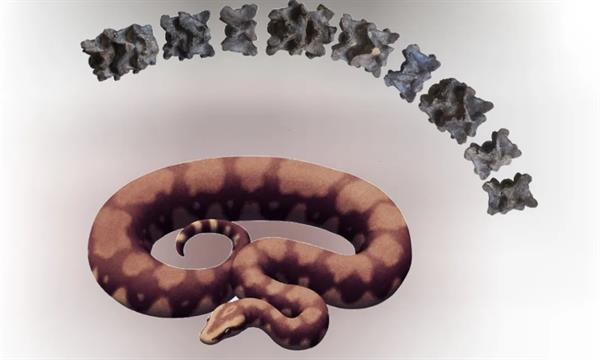IT Roorkee professors discover fossil of 47-million-year-old snake in Gujarat: ‘One of the largest known’.
Discovery of 47-million-year-old snake fossil in Gujarat by IIT Roorkee researchers. Named Vasuki Indicus. Reveals prehistoric biodiversity.

Researchers from the Department of Earth Sciences at IIT-Roorkee achieved a groundbreaking feat in Gujarat, uncovering the fossil of a snake dating back 47 million years. This snake is hailed as "one of the largest known terrestrial snakes to have ever existed." Named Vasuki indicus by scientists, after the snake king associated with Lord Shiva, it belonged to the extinct Madtsoiidae snake family, estimated to measure between 11 to 15 meters in length and weighing nearly a tonne. The scientists recovered 27 vertebrae from this specimen. Although resembling a large python, this snake would not have been venomous had it been alive. It represented a distinct lineage within the now-extinct Madtsoiidae snake family, originating in India. The study also highlighted the snake's size, comparable to the extinct Titanoboa, which lived over a broad geographical range spanning Africa, Europe, and India for approximately 100 million years, from the Late Cretaceous to the Late Pleistocene. IIT Roorkee shared the discovery on X, emphasizing its significance in unveiling India's prehistoric biodiversity.
IIT Roorkee's Prof. Sunil Bajpai & Debajit Datta discovered Vasuki Indicus, a 47-million-year-old snake species in Kutch, Gujarat. Estimated at 11-15 meters, this extinct snake sheds light on India's prehistoric biodiversity. Published in Scientific Reports. #SnakeDiscovery pic.twitter.com/ruLsfgPQCc
— IIT Roorkee (@iitroorkee) April 18, 2024
According to Debajit Datta, a postdoctoral researcher in palaeontology at IIT Roorkee and the lead author of the study, Vasuki, owing to its substantial size, was likely a slow-moving ambush predator, using constriction like anacondas and pythons to subdue its prey. He further explained that Vasuki inhabited a marshy swamp near the coast during a period of higher global temperatures than today. Sunil Bajpai, a palaeontologist, professor at Roorkee, and co-author of the study, noted that Vasuki's estimated body length is comparable to that of Titanoboa, although the vertebrae of Titanoboa is slightly larger, yet determining whether Vasuki was more massive or slender compared to Titanoboa remains uncertain at this stage.
| Follow the Hindeez on Google News |  |
| Follow the Hindeez channel on WhatsApp |  |